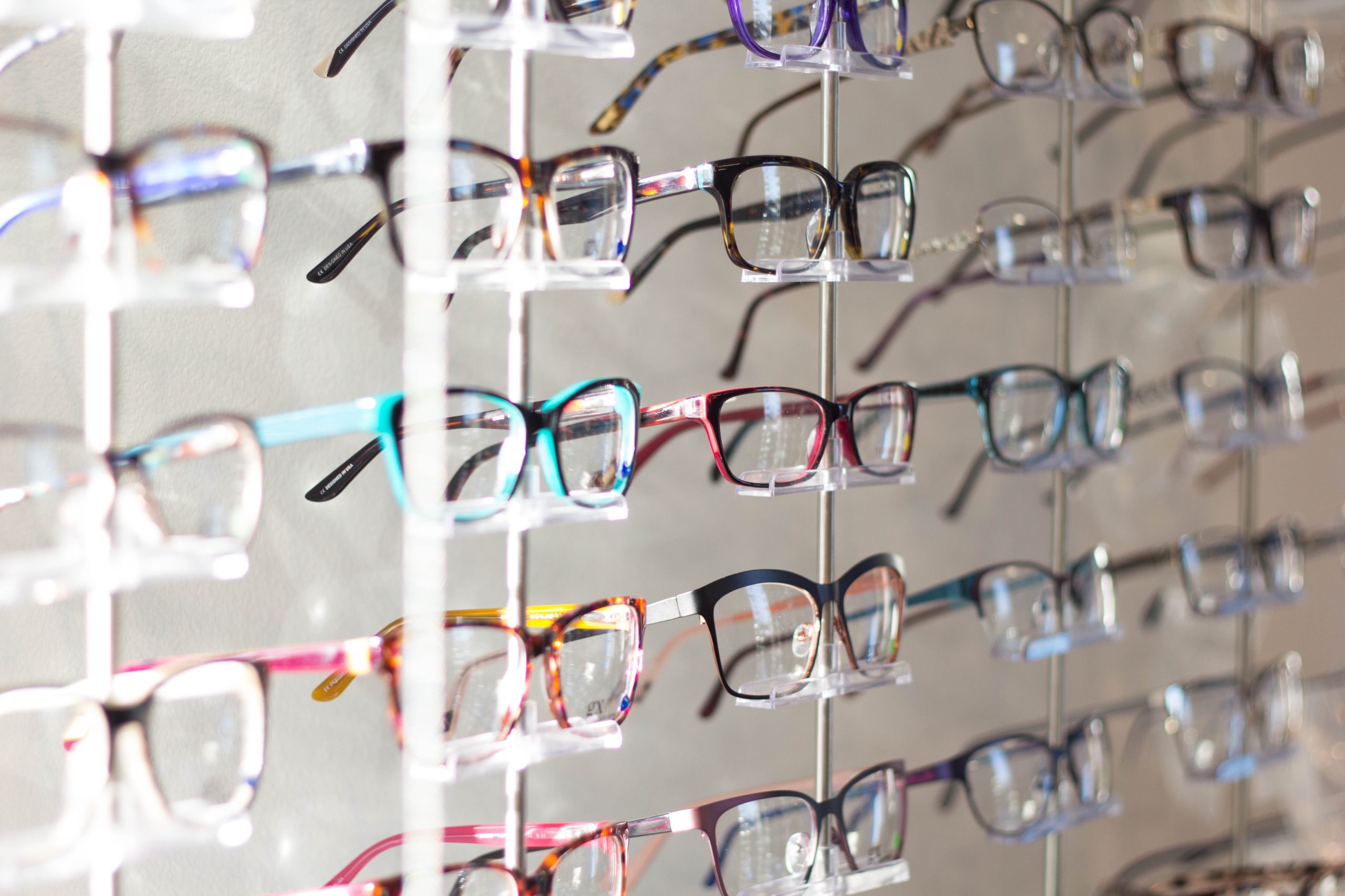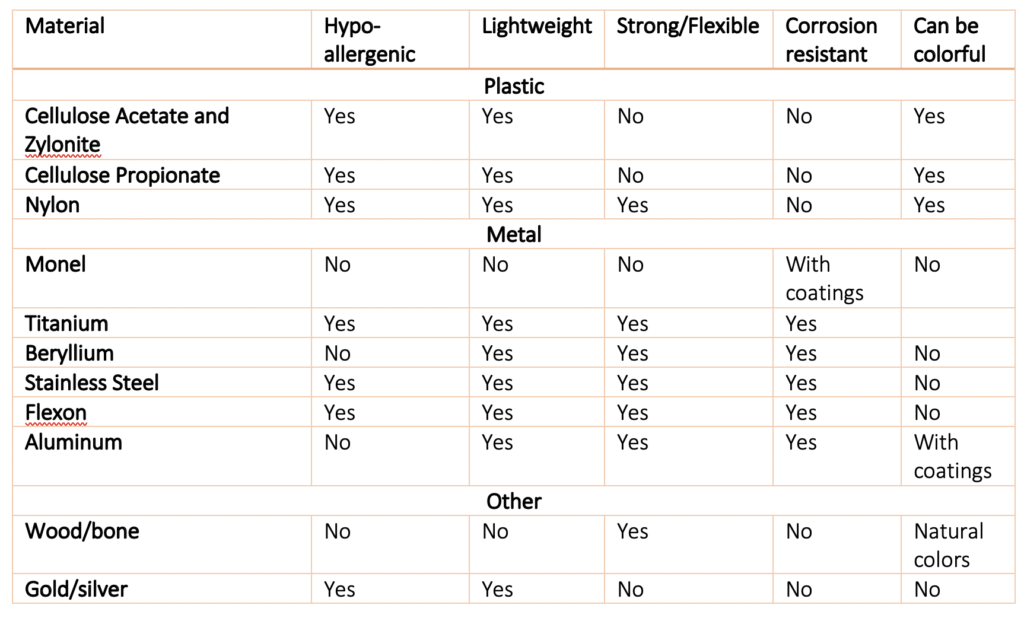
You may notice that you have two major types of glasses. Frames that are metal and plastic. This is correct, but there is so much more than within these two groups. They can also be broken down even further.
If you’re looking for some advice on what types of frames to get next, we are here to help!
For so many years, I felt because of my prescription I would never have some types of frames. As technology in optics has grown and expanded options changed. There are different types of lenses and frames that are able to accommodate heavy thick lenses.
Some frames are very durable. Others are light weight. Some are hypoallergenic. Each line, manufacture and material come with benefits. If you want to find something specific to your needs, our opticians are trained in helping individuals find frames that not only look great but feel great too!
Plastic is plastic, right? Not exactly. A fashionistas may tell you zylonite (cellulose acetate) is the way to go. This is because this plastic material is great for cost-effective options. There are layered colors, all different colors, light colors, etc. This is a great option for patients that feel they can see their frames. Where an all-black frame would be a fashion statement!
Another plastic, which can help with sensitive skin and allergies, is cellulose acetate propionate. This is a nylon-based plastic. Due to the makeup of the plastic it is hypoallergenic. It is also lightweight and has more gloss than other plastics. These frames tend to be lightweight and easy to wear for longer periods of time. Also a great fit for individuals with higher prescriptions and heavy lenses.
Remember when nylon frames were popular? They were not great back then. They created brittle issues and broke often. As a result, many manufactures started mixing nylon with other types of plastics to make it more durable but also lightweight. This created a premier material for sports and performance frames. They are resistant to temperature changes but also stiff. If you have a “wraparound” frame, most likely nylon is mixed within the plastic of your frames.
Castor oil and plastic. Yes, you read that right. CASTOR OIL. Although castor oil has made its way from its original use into the beauty market, it is also used for machinery lubricant. Mixed with plastic and other non-petroleum-based plastics it allows for a glassy plastic frame.
All options in optics have drawbacks. This includes glasses. What are the negatives of plastic frames?
Now let’s talk metal frames. My favorite metal frame is made of titanium. Titanium and beta-titanium are very popular materials for frames. This is because titanium is lightweight, durable, strong, and corrosion resistant.
Another metal typically used in frames is monel. This is a malleable and corrosion resistance mix of metals. This type of metal is great for hypoallergenic and individuals with sensitive skin. Additionally, if you suffer from sensitive skin keep in mind the plating on the frames. This can either help or hurt the efforts to reduce irritation.
A fraction of metal frames is made from a titanium alloy (nickel or copper). They tend to cost less but are not very common.
Beryllium is a steel-gray metal that is lower in cost than titanium. It is also resistant to corrosion and tarnish. It is lightweight and strong. Also, very flexible.
Stainless steel is also a common frame type. A great hypoallergenic option, it is also lightweight and reasonably priced. It also tends to help up better to heat and corrosion due to its chromium makeup.
If you have heard of memory metal frames, you are looking at flexon frames. This titanium-based alloy is popular. These frames are able to go back into shape after twisting and bending. In addition to being corrosion resistant and hypoallergenic lightweight frames, these frames are a great option.
The last metal frame we are going to talk about is aluminum. This is also a lightweight and highly corrosion resistant materially. This is typically used in designer eyewear because of its design type look.
If this is the case, most likely you have a specific style and eye for high-end frames. These days you can find optical clinics that have frames made of gold, silver, recycled records, bones, leather, crystals, and more. The drawback of these are they are high price and hard to find. They also are fun to wear!
This is A LOT of information, so we have put together a fun chart of reference.
